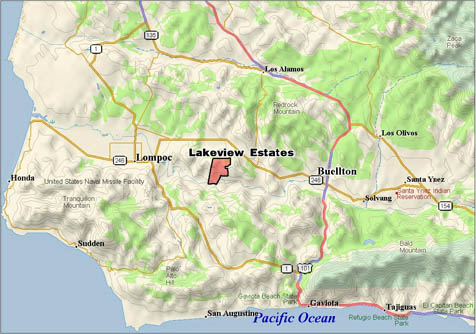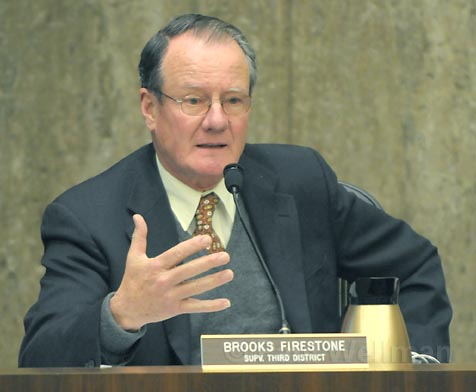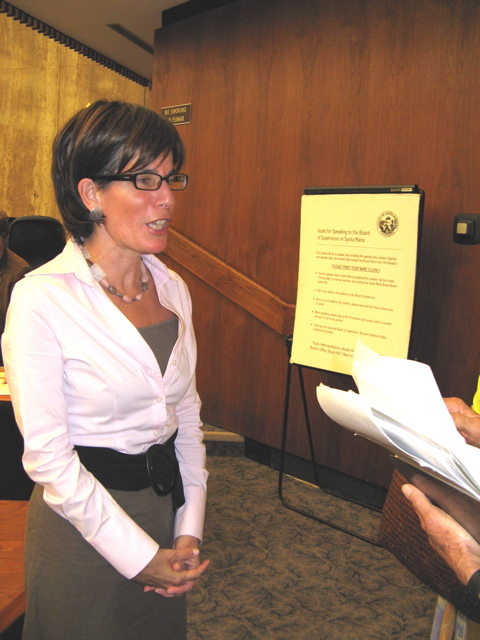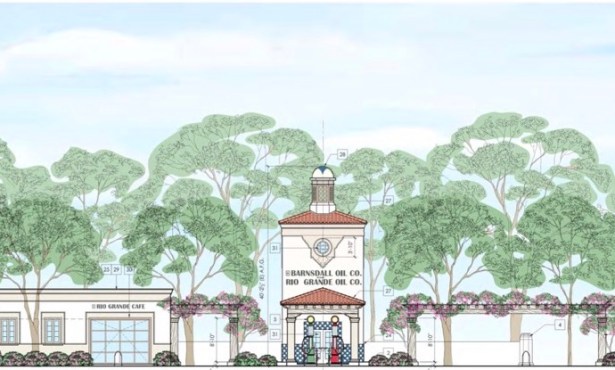Will Lakeview Estates Preserve Ag or Destroy It?
Controversial New Service District in the Santa Rita Hills Approved Amidst Farm Fields

Plans to start a brand new 1,500-acre community service district smack dab in the middle of Santa Barbara County’s choicest wine country – the Santa Rita Hills appellation between Lompoc and Buellton – was approved last Thursday, June 5, by the Local Agency Formation Commission (LAFCO). The board approved the district with a 5-to-2 vote, despite urgent warnings by several neighboring farmers that so doing will pave the way for urban sprawl, new upscale housing tracts, and the eventual demise of agriculture.
But a majority of the LAFCO board – made up of elected officials from the various city councils and special districts throughout the county as well as members of the county board of supervisors – believed just the opposite. They argued that the new Santa Rita Hills Community Service District would make it easier for landowners of 39 forty-acre lots to stay in agriculture. These lots comprise the “Lakeview Estates,” which were subdivided in the 1960s and named after a never-built lake that some audacious developer had hoped would be created by damming the Santa Ynez River.
The immediate impetus driving the creation of the service district is the need for a paved road to allow property owners better access to their land. In winter months, the steep dirt road leading into Lakeview Estates and linking the parcels is often choked with mud and virtually impassable. Lakeview property owners – currently engaged in small-scale ranching, lavender cultivation, and viticulture – insist a new paved road is essential for them to care for their crops and creatures year-round. They claim they’ve been stymied in their efforts to build such a road over the years just because one property owner, who owns eight lots, has refused to cooperate. Without such a service district, they contend, the other property owners lack the legal ability to levy taxes on themselves needed to pay for road design, environmental analysis, and ultimately construction.
Leading the charge for the new road and new service district was property owner Chris Marks. In his 30 years on the land in question, he said county planners had wasted “hundreds and thousands of hours” trying to resolve the road dispute among different Lakeview landowners. By approving the new service district, they could wash their hands of persistent nuisance and let the property owners solve the problems themselves.

LAFCO board member Bob Short concurred, explaining, “I would find it completely beyond my ken to refuse to let these people solve their problems with their own money.” Supervisor Brooks Firestone, also a member of the LAFCO board, commented that change is the subject of undue fear among many county residents. Speaking of the proposed community service district, he said, “This is not a change I fear.”
The proposal’s critics are mostly nearby farmers who worry that the new road would beget new barns, then cottages, and then bona fide estates. This, in turn, they predicted, would require yet another access road. And the land for such a road could only be acquired by condemning prime ag land.
John Cargasacchi, whose family owns eight of the parcels in question, likened the community service district to the proverbial camel’s nose under the tent. “Tomorrow the entire camel will be inside the tent,” he said.
The Cargasacchi family has been accused of refusing to bargain in good faith with fellow Lakeview property owners to allow construction of the new road. That refusal has been cited as the reason why the community service is necessary. At Thursday’s LAFCO meeting, Cargasacchi denied such accusations, claiming the other owners have a court order by which they could build the new road but that they’ve failed to pursue this. (LAFCO executive Bob Braitman noted in his staff report that there’s been a long-standing dispute among property owners and that it appears intractable without the new community service district.) “Don’t approve this thing,” Cargasacchi implored the board. “It is a disaster for agriculture, endangered species – everything.”
Cargasacchi was backed up by area farmers and ranchers like Art Hibbets, Jose Baer, Leroy Scolari, and Sharon Merrit. Also weighing in against the new service district was Mary Ellen Brooks of Citizens Planning Association. “It’s not LAFCO’s job to resolve disputes between property owners,” Brooks argued. “It’s your mission to preserve agriculture and prevent urban sprawl.” Her arguments found traction with two of the LAFCO boardmembers: Lompoc’s mayor Dick DeWees and Larry Wilson. DeWees predicted that once the new service district was established, property owners would use it as the vehicle to agitate for ever increasing infrastructural amenities. Farm manager Jose Baer also argued the new district would have negative consequences for existing agricultural operations within the proposed service boundaries because the cost of new taxes would be comparable to that required to bring five acres of grapes into cultivation.
The new service district that approved on Thursday was considerably pruned back from what had been initially considered last December. At that time, LAFCO executive Braitman had embraced a plan that would have given the new service district the ability to distribute water among the property owners. In addition, that plan would have allowed the new district to pursue a second access road in the future, using the powers of eminent domain if need be. “We don’t have to guess what these people will be asking for in the future because it’s what they already said they wanted in December,” warned farmer Sharon Merrit. “They want water and external access roads.”
Braitman took exception to Merrit’s remarks, stating, “We’re not trying to hide the ball and the applicant’s not trying to be sneaky.” Braitman said the plans were changed not as a tactical subterfuge, but because new information had come to light that revealed previous aspects of the proposal were either not necessary or infeasible.
Specifically, Braitman inserted language he hoped would address the fear of condemnation by nearby farmers and ranchers. The new district would be conditioned to allow the development of only one access road within the property and no road leading into it. As for water rights, individual property owners within the proposed service district enjoy a wide variety of water rights, Braitman said, and they would not change.

LAFCO boardmember and county supervisor Janet Wolf expressed serious concern that much of the restrictive language written into the proposal was still too vague and nebulous. If and when the new service district sought to expand what it was allowed to do under the terms and conditions of its LAFCO, future boards would have no way of knowing what was proscribed and what was allowed, Wolf warned. Braitman said the sole reason for the new service district was to construct the new road. “I may sound – I hate the word – a little anal, but look at the document. It says ‘significant capital improvements,'” explained Wolf. “If it’s restricted to roads, let it say roads.”
Despite her concerns, the proposal passed 5-2.



